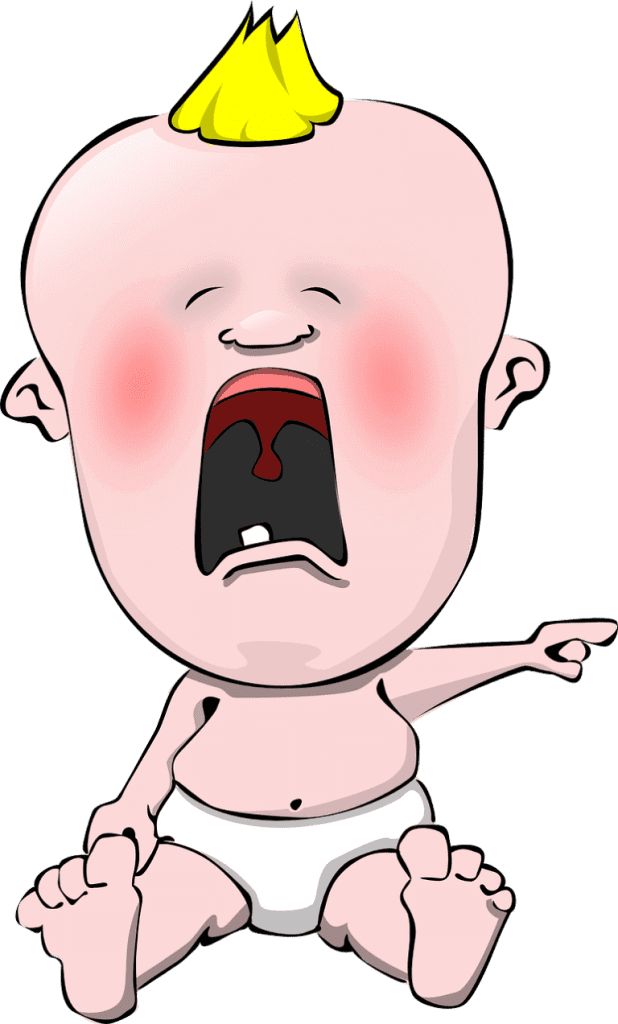
Head injury in children
This is not an easy topic to write about. Mainly because most of the content is quite subjective, without much objective data and statistics.
Besides, how is one supposed to put together guidelines for the approach to head injuries without hearing the full story and seeing the child at stake? No two kids are identical… and the same goes for their head injuries.
On the other hand, this is something we come across day-by-day, and I feel like I can really improve the approach parents could have to their children after a head injury and to prevent some common behaviours that are unnecessary.
So just remember, the goal of this chapter is not to tell you exactly when to see or not to see a doctor for evaluation of head injury. It is more so to give parents the theoretical tools to be able to assess their child’s head injury. That is to say – what is more important and what is less important? What should you be looking for?
It is also important that parents learn about the red flags of head injuries from this chapter, the ones that require immediate medical attention.
Notice that I will not be talking about cuts or bruises in this chapter, but only about blunt head trauma.
Why do kids get head injuries? Is it normal? Can we prevent them from happening?
There is a saying in medicine that goes “every child falls everyday”. Kids fall a lot. Additionally, babies’ and young children’s relatively largely heads bring about more head injuries.
It just happens. And most of the time, it is inevitable. But one should obviously distinguish between two different scenarios:
A child that starts walking, falls to the side, and hits his head lightly – this stuff happens, and it is very hard to stop it from happening unless we wrap our kids up in a cotton ball until they are adults.
An infant that falls off a changing table – this happens to almost everyone, but it really shouldn’t. A baby should never be left alone on a changing table, not for a minute, and not even before he’s learned how to roll over. They will simply fall off. I advise you to make a habit of putting your hand over your baby for the times when you have to turn around and remove your eyes off them.
And now, if it has happened once, and it can happen to anyone, I hope no harm has been made. If it has happened twice or more than twice – you are probably not careful enough, try to think about how you’re going to fix that.
Why are we so afraid of head injuries? What could possibly happen?
Obviously, the biggest fear is from the different types of brain bleedings that could occur. Even though they are not very common after mild head injuries, we don’t want to miss them.
In addition to this scary term “internal brain bleed”, that is actually what stimulated the writing of this chapter, it is important that you familiarize yourself with a few more terms. Even though some of these terms sound threatening as well, I think it’s important that parents understand what it is we are discussing here.
What is a skull fracture? Is it the end of the world if it happens?
A skull fracture is a fracture in the skull that can usually be shown on a simple X-ray. It could be linear, compressed etc. Remember, even if there is a fracture in the skull (usually linear) it really isn’t the end of the world and most of the time there is no need for any medical intervention. However, a fracture in the skull could indicate the severity of the trauma and in order to be able to rule out the possibility of internal brain bleeding these children may need to undergo further imaging.
What do I mean? Lots of emergency rooms carry guidelines for head injuries that discuss skull X-rays. Why? In order to detect fractures. If a fracture is detected, the child will usually have to undergo further imaging like a head CT. If there is no fracture – the guidelines usually require a few hours of observation at the emergency room.
In most cases of linear skull fractures, there will be no accompanying internal bleeding but it is still something that needs to be searched for. Treatment of complex fractures, including compression fractures is beyond the scope of this chapter.
What is a head concussion?
Beyond head injuries, head concussion is a term used to describe what happens to the brain during a head injury. The brain is tossed from side to side inside the skull when an injury occurs. The first signs and symptoms could be a short loss of consciousness, dizziness, headache, nausea and vomiting. At the end of the day, despite being very unpleasant, head concussions are not dangerous and resolve spontaneously.
So how shall we know if the child that underwent a head injury suffered from a concussion? Or bleeding? Or the devil knows what else? Or in other words – what should we be looking out for in children with head injuries?
Attention must be made to mechanism of injury:
The mechanism of injury is a basic term used to describe injuries in general and head injuries in particular and it very much affects decision-making abilities.
A child who sat down, fell backwards from a sitting position and hit his head on the carpet – unpleasant, not nice, but usually not a big deal. Most of the time.
A child that tried to climb a two-meter gate, fell off it and hit his/her head – now that’s a catastrophe. He/she will need immediate medical evaluation even if he’s feeling great.
What I’m trying to say is respect the mechanism of injury and try to think (or allow your physician to do the thinking, if you are in doubt), whether or not a workup is necessary.
Attention must be made to child’s age:
Under the age of one, a child’s skull is soft and tends to break more easily than in older children. Therefore, evaluation of head injury depends on the age of the child. In addition, in an older child we can usually get him to cooperate more and are able to better assess whether or not he’s doing well. In a younger child, it is more difficult.
So, for example, in some emergency rooms the normal guidelines will require a physician to perform a skull X-ray to every child with a head injury who is under the age of one.
Attention must be made to local findings at the site of injury:
Depending on the injury, you will be able to see either an intact site or one that is swollen, bleeding or sensitive. The presence of a hematoma, which is a soft area underneath the skin, requires medical evaluation in infants and young children.
If a parent is not too nervous and sensitive they may be even able to try and feel their child’s heads themselves, especially in younger children, and look for a fracture. Fractures that are compressed are especially palpable (the bone simply seems to pop in and out on palpation). Don’t forget that younger infants have open fontanelles (read more here), so don’t get that confused with a hematoma or something like that.
Attention must be made to child’s behaviour immediately after the injury:
Mild symptoms, such as a headache that resoled, pallor, dizziness, nausea and vomiting, fatigue all make sense after mild head injuries. On the other hand – loss of consciousness, seizures, severe headaches, confusion, recurrent vomiting, loss of memory, all these require immediate medical attention.
Attention must be made to child’s behaviour within few hours after the injury:
For the first few hours after the injury, try to notice your child’s behaviour. These signs require further evaluation:
Excessive sleep or difficult in awakening.
Recurrent vomiting.
Changes in behaviour such as confusion, sleepiness or change in consciousness.
Seizures or contractions.
Sudden onset of unbalanced posture or abnormal walking (in children over the age of one).
Episode of ear bleeding or nose bleeds.
Weakness in the arms or legs.
Sudden onset of severe headache or blurred vision (children over the age of 5).
Attention must be made to accompanying injuries:
It is true that we are discussing head injuries but any trauma could bring about injury in other organs, as well. Look for injuries in other regions of the body as well. Make sure there is full movement of all 4 limbs without any abnormalities.
So, what should I do (or not do) if my child gets injured in the head?
Back when I was a kid we used to be told to press a penny on our swollen head bump. Do me favor, don’t do that.
So, what should you really be doing? Try to assess the mechanism of injury and your child’s behaviour after the injury. In cases of severe injury, or if there is any doubt at all – see a doctor for a physical examination.
Cold compresses can be places on the site of injury.
Allow your child to rest with minimal noise. If he wants to relax using his screen, this is a good time.
What should you not do? I know it’s easier said than done, but if possible, try not to stress. If the mother of a child who has fallen and is hurt is crying, while the neighbour is standing there pouring water over his/her head – I would also probably lose my mind. Give him/her a hug, talk to him/her calmly, try to calm down and then go over the red flags I’ve mentioned and think about whether you need to seek further medical attention.
There’s a question I’ve heard often from parents after their child suffers a head injury (this is, by the way, the question that drove me to write this chapter) and it is: “How long should I keep him awake for?”. Let’s think, the child has fallen, is hurt, crying and in pain and all he really needs right now is to rest. It is also probably bedtime for him anyway. So, my message to you is – allow him to behave naturally. There is no medical recommendation out there requiring parents to stop their child from sleeping after a head injury.
One episode of vomiting? Not necessarily the end of the world if the injury did not include any other red flags. Several episodes of vomiting or episodes that occur several hours after the injury? Make your way to the emergency room…
So how shall I summarize?
This is a very common topic in pediatrics, pretty much the day-to-day life of a pediatrician. It is important to distinguish between severe injuries that require further workup (this usually comes down to imaging) and those that require medical observation for several hours or no further workup at all.
Stress? Not helpful when trying to think and make decisions. So, try to think of the mechanism of injury and the child’s behaviour when you’re calm. And if there are any doubts – consult with your pediatrician.
For comments and questions, please register
